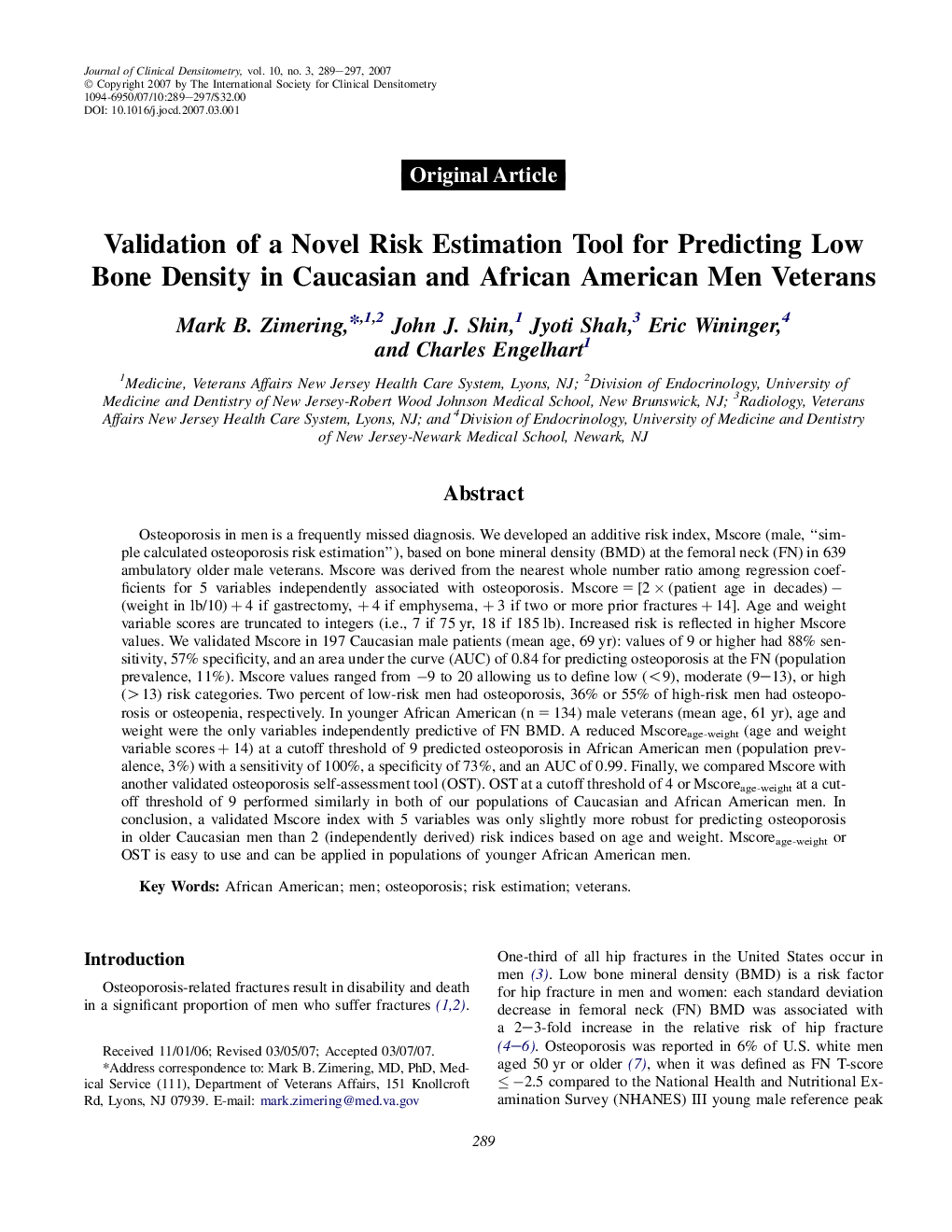| Article ID | Journal | Published Year | Pages | File Type |
|---|---|---|---|---|
| 3271706 | Journal of Clinical Densitometry | 2007 | 9 Pages |
Abstract
Osteoporosis in men is a frequently missed diagnosis. We developed an additive risk index, Mscore (male, “simple calculated osteoporosis risk estimation”), based on bone mineral density (BMD) at the femoral neck (FN) in 639 ambulatory older male veterans. Mscore was derived from the nearest whole number ratio among regression coefficients for 5 variables independently associated with osteoporosis. Mscore = [2 Ã (patient age in decades) â (weight in lb/10) + 4 if gastrectomy, + 4 if emphysema, + 3 if two or more prior fractures + 14]. Age and weight variable scores are truncated to integers (i.e., 7 if 75 yr, 18 if 185 lb). Increased risk is reflected in higher Mscore values. We validated Mscore in 197 Caucasian male patients (mean age, 69 yr): values of 9 or higher had 88% sensitivity, 57% specificity, and an area under the curve (AUC) of 0.84 for predicting osteoporosis at the FN (population prevalence, 11%). Mscore values ranged from â9 to 20 allowing us to define low (<9), moderate (9-13), or high (>13) risk categories. Two percent of low-risk men had osteoporosis, 36% or 55% of high-risk men had osteoporosis or osteopenia, respectively. In younger African American (n = 134) male veterans (mean age, 61 yr), age and weight were the only variables independently predictive of FN BMD. A reduced Mscoreage-weight (age and weight variable scores + 14) at a cutoff threshold of 9 predicted osteoporosis in African American men (population prevalence, 3%) with a sensitivity of 100%, a specificity of 73%, and an AUC of 0.99. Finally, we compared Mscore with another validated osteoporosis self-assessment tool (OST). OST at a cutoff threshold of 4 or Mscoreage-weight at a cutoff threshold of 9 performed similarly in both of our populations of Caucasian and African American men. In conclusion, a validated Mscore index with 5 variables was only slightly more robust for predicting osteoporosis in older Caucasian men than 2 (independently derived) risk indices based on age and weight. Mscoreage-weight or OST is easy to use and can be applied in populations of younger African American men.
Related Topics
Health Sciences
Medicine and Dentistry
Endocrinology, Diabetes and Metabolism
Authors
Mark B. Zimering, John J. Shin, Jyoti Shah, Eric Wininger, Charles Engelhart,
